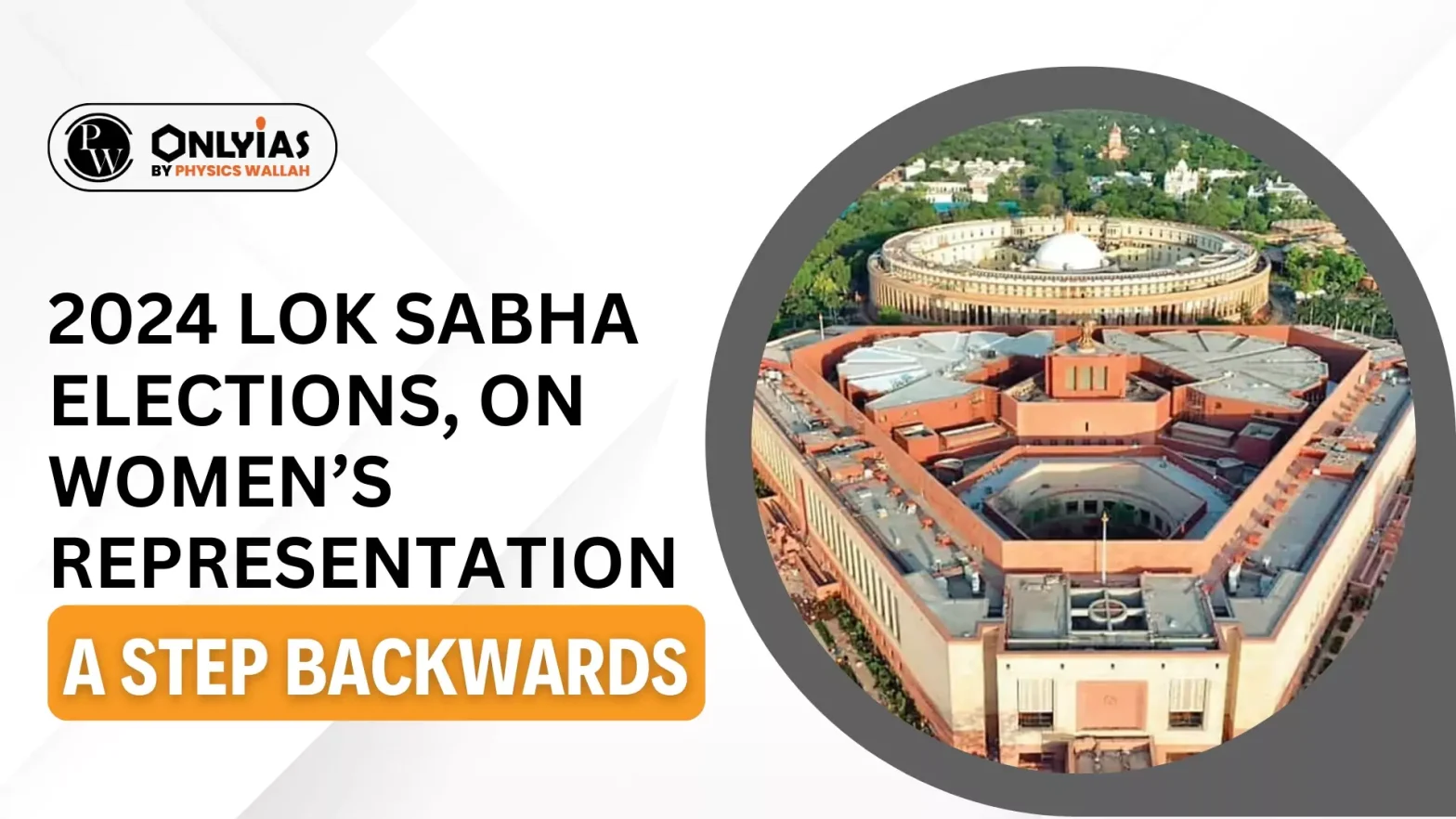Even as women remained central to poll promises, and mere months after the historic Women’s Reservation Bill was passed, they remain on the margins of politics.
2024 Lok Sabha Elections
- Gender Representation in the 18th Lok Sabha: Comprises 74 women and 469 men. Women MPs make up only 13.6% of all MPs. A regression from the 2019 election, which had 14.4% women MPs.
- Expectations vs. Reality: First election after passing the Women’s Reservation Bill. Bill aims to reserve one-third of seats in Lok Sabha and state assemblies for women.
- Despite this, women’s parliamentary representation did not improve as expected.
Enroll now for UPSC Online Course
Reservation is Not Enough
- Political Parties and Women’s Reservation Bill: All political parties expressed support and claimed credit for the bill. Women remained a significant demographic in this election.
- Representation in Campaigns: Women featured prominently in party manifestos and campaign speeches. Emphasis on understanding and catering to women’s voting preferences.
- Limited Roles for Women: Women viewed more as voters and beneficiaries rather than leaders. Only 9.6% of all candidates were women (11% on party tickets). Slight increase from 9% in 2019.
- Challenges Faced by Women Candidates: Women candidates faced misogynistic remarks and jibes. Low representation among candidates results in marginal representation among those elected.
- Global Comparison and India’s Ranking:In 2023, 52 countries averaged 27.6% women MPs. Globally, women make up 26.9% of all MPs. Before the 18th Lok Sabha, India ranked 143rd out of 185 countries. Expected drop in ranking by five or six positions due to lower women’s representation.
An Example from Mexico
- Historic Election in Mexico: Day before India’s counting day, Mexico held general elections. Claudia Sheinbaum elected as Mexico’s President, the first woman to hold the office.
- Significance of Sheinbaum’s Election: Represents a logical step in Mexico’s journey toward more representative politics. Reflects ongoing efforts to achieve gender parity in political representation.
- Legislative Reforms and Grassroots Movements: Reforms driven by grassroots feminist movements over decades. Laws mandate gender parity across all spheres of government. Political parties required to have gender parity in candidate lists.
- Impact of Reforms in Mexico: Achieved parity in both houses of Parliament. Women hold several significant political offices. In 2024, both top contenders for President were women.
- Challenges and Global Context: Despite progress, political and gender-based violence remain issues. Demonstrates that deliberate reform can overcome entrenched gender norms. Other countries are also making efforts for more inclusive and gender-sensitive politics.
Check Out UPSC Modules From PW Store
We are all Responsible
- India’s Leadership in Local Women’s Political Participation: Significant strides made in expanding women’s political participation at the local level. India has been at the forefront of these efforts.
- Need for Commitment at Higher Levels: Urgent need to address representation gaps at state and national levels. Requires top-down reforms to ensure gender parity.
- Role of Political Parties: Political parties bear the primary responsibility for driving progress. Ensuring increased women’s representation is crucial and non-negotiable.
- Importance of Addressing Representation Dip: Decline in women’s representation should not be underestimated. Progress in women’s participation (and for other marginalized groups) is often non-linear and fragile.
- Call for Continuous Vigilance: Continuous and vigilant efforts are necessary to maintain and advance progress. Ensuring equal participation requires constant attention and proactive measures.
Enroll now for UPSC Online Classes
Conclusion
India’s progress in women’s political representation needs sustained, proactive efforts and top-down reforms to achieve gender parity, ensuring true inclusivity and equality.
![]() 11 Jun 2024
11 Jun 2024

